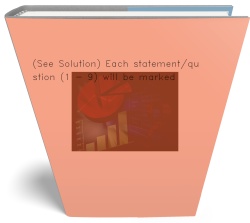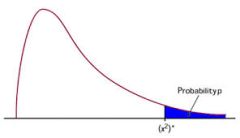SPSS Final Assignment 100 points The purpose of the final assignment is to assess the SPSS skills that
SPSS Final Assignment
100 points
The purpose of the final assignment is to assess the SPSS skills that you have acquired. This assignment is different than other assignments in that I don't tell you exactly what output to produce. I give you guidelines and constraints, but much is left up to you. This requires that you use your data analysis skills as you would in a real research or work situation.
Because each of you will produce somewhat different output, it is very important that you make it clear what you have done. For this assignment, you must print the commands in the Log from the SPSS Viewer. If the Log is not showing in the Viewer, go to the Edit menu and click on Options. In the Viewer tab, select "Display commands in Log". With hand-written comments, annotate the Log to make it clear why you have used each command. Of course, in addition to printing the Log, you must still print the actual statistical output from the procedure that you ran. Be sure to label each statistical output to make it clear with which question it goes. Clarity in labeling and annotating the output is critical; if I cannot easily tell what you were trying to do or where the relevant output is, you will not do well on this assignment. You should take this as an opportunity to "show off." Don't do this assignment in the most minimal way; instead, try to convince me that you have learned a lot.
On this assignment you may not use the same approach to the question as does another student. Within the constraints of each question, each student should take a unique approach. Do not produce the same output that someone else does.
- In the Self/Other Attribution (SO) study, maybe there would be a stronger relationship between making external attributions and Private Self Consciousness (PSC) scores in the Self condition if we looked only at extremely high or low PSC scores. Use the Frequencies procedure to decide on cutoff values in the Self condition for high and low PSC scores. Print the frequencies table. After selecting the cutoffs, use Recode to create a new variable defining the cases with extreme (high or low) PSC scores. Don't select such extreme scores that you have fewer than 10 cases in each level of the recoded PSC variable. Remember that you are printing and annotating the Log to describe how you did this. Be sure that your annotations describe what the cutoff values are and your rationale for choosing those cutoffs. Use Variable Labels and Value Labels for any new variables to make the output clearer. For the Self condition only, do an Independent Samples t-Test to determine if the PSC score has an effect on external attributions. You can look at the number of Positive Depends, Negative Depends, or Total Depends (choose one). Do the Six Steps in the Inferential Process for this test. Your report of the Six Steps should be typed. Create and print an appropriately labeled and edited bar chart to show the results of this comparison. The chart should have its vertical axis set to zero, and should show only the two means compared in the t-test.
- Using the SO data, determine a comparison for which it appropriate to do a Paired Samples t-Test. Specifically, chose a comparison related to the possibility that the number of Yes, No, or Depends responses may be different from each other depending on whether subjects are judging themselves, liked others, or disliked others and whether the trait judged is positive or negative. Of course, a single Paired Samples t-Test can only evaluate one of the many appropriate two-way means comparisons that are relevant to this possibility. Some comparisons are not appropriate for a Paired Samples t-Test. You need to choose an appropriate one. Carefully describe what comparison you have chosen to evaluate and why it is appropriate for this test. Remember that you are printing and annotating the Log to describe what you have done. Conduct the test and do the Six Steps in the Inferential Process for the test. Your report of the six steps should be typed. Create and print an appropriately labeled and edited bar chart to show the results of this comparison. The chart should have its vertical axis set to zero, and should show only the two means compared in the t-test.
- In the physical attraction (PA) study, maybe there would be a stronger relationship between physical attraction and positiveness of the social interaction if we looked only at people more at the extremes of attractiveness. Use the Frequencies procedure to decide on cutoff values for high and low attractiveness. Print the frequencies table. After selecting the cutoffs, use Recode to create a new variable defining the cases with extreme (high or low) attractiveness. Don't select such extreme scores that you have fewer than 30 cases in each level of the recoded attractiveness variable.
Remember that you are printing and annotating the Log to describe how you did this. Be sure that your annotations describe what the cutoff values are and your rationale for choosing those cutoffs. Use Variable Labels and Value Labels for any new variables to make the output clearer. Using all subjects (both genders combined), do an Independent Samples t-Test to determine if the attractiveness has an effect on positiveness of the social interaction. You can use whichever measure of positiveness that you want as the dependent variable. Do the Six Steps in the Inferential Process for this test. Your report of the six steps should be typed. Create and print an appropriately labeled and edited bar chart to show the results of this comparison. The chart should have its vertical axis set to zero, and should show only the two means compared in the t-test.
Deliverable: Word Document



![[Steps Shown] Pilgrim Bank Case Graded Assignment For this assignment, [Steps Shown] Pilgrim Bank Case Graded Assignment](/images/solutions/MC-solution-library-81036.jpg)

![[See Steps] A statistics instructor is concerned about his students' [See Steps] A statistics instructor is concerned](/images/solutions/MC-solution-library-81038.jpg)

